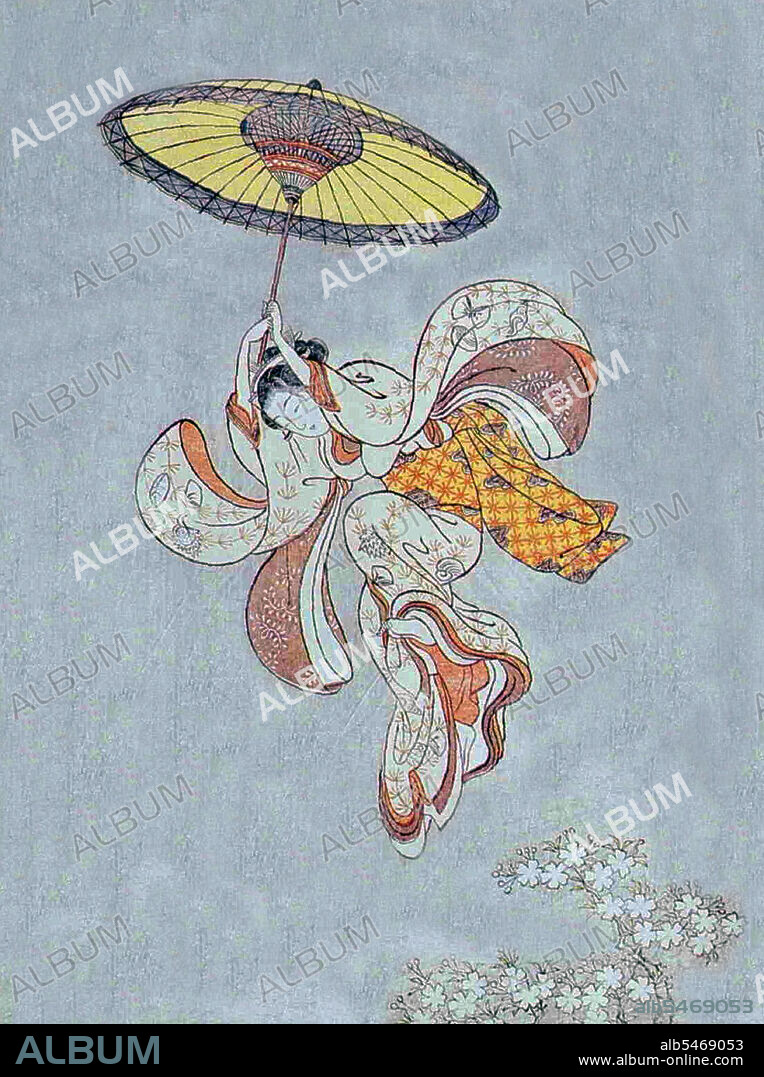alb5469053
A young woman jumps form Kiyomizu-dera Temple, Kyoto, using a parasol to help break her fall, c.1750.

|
Añadir a otro lightbox |
|
Añadir a otro lightbox |



¿Ya tienes cuenta? Iniciar sesión
¿No tienes cuenta? Regístrate
Compra esta imagen.
Selecciona el uso:

Título:
A young woman jumps form Kiyomizu-dera Temple, Kyoto, using a parasol to help break her fall, c.1750.
Descripción:
Ver traducción automática
Suzuki Harunobu (1724 July 7, 1770) was a Japanese woodblock print artist, one of the most famous in the Ukiyo-e style. He was an innovator, the first to produce full-color prints (nishiki-e) in 1765, rendering obsolete the former modes of two- and three-color prints. Harunobu used many special techniques, and depicted a wide variety of subjects, from classical poems to contemporary beauties (bijin, bijin-ga). Like many artists of his day, Harunobu also produced a number of shunga, or erotic images. During his lifetime and shortly afterwards, many artists imitated his style. A few, such as Harushige, even boasted of their ability to forge the work of the great master. Much about Harunobu's life is unknown. The popular expression 'to jump off the stage at Kiyomizu' is the Japanese equivalent of the English expression 'to take the plunge'. This refers to an Edo period tradition that held that, if one were to survive a 13m jump from the stage, one's wish would be granted. Two hundred and thirty-four jumps were recorded in the Edo period and, of those, 85.5% survived. The practice is now prohibited.
Crédito:
Album / Pictures From History/Universal Images Group
Autorizaciones:
Tamaño imagen:
3600 x 4825 px | 49.7 MB
Tamaño impresión:
30.5 x 40.9 cm | 12.0 x 16.1 in (300 dpi)
 Pinterest
Pinterest Twitter
Twitter Facebook
Facebook Copiar enlace
Copiar enlace Email
Email
